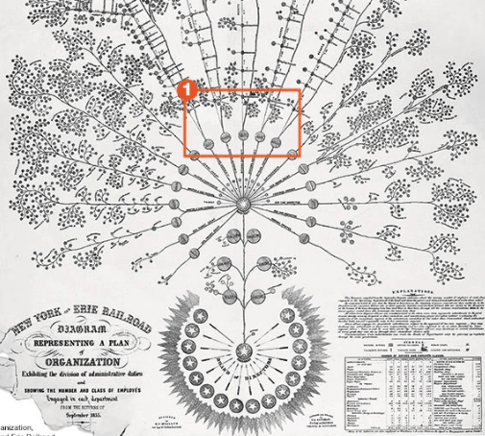
Most of our modern management practices stem from 19th-century factory floors. Did you know the first org chart ever created was designed in 1854 as a tree versus a pyramid? Read about it here!
Since the Industrial Revolution, many leaders have challenged these old, antiquated, hierarchical ways of managing organizations and people.
One of the boldest examples of this was Tony Hsieh, the CEO of Zappos.
In 2014, Tony signed a Holacracy Constitution moving Zappos to a self-governing organization. Tony was known for his wild ideas, but this move was surprising even for those who knew him.
In that same year, I spent time with Tony to see first hand how he moved Zappos away from a typical top down structure towards holacracy, a management system of agile, self-organizing networks.
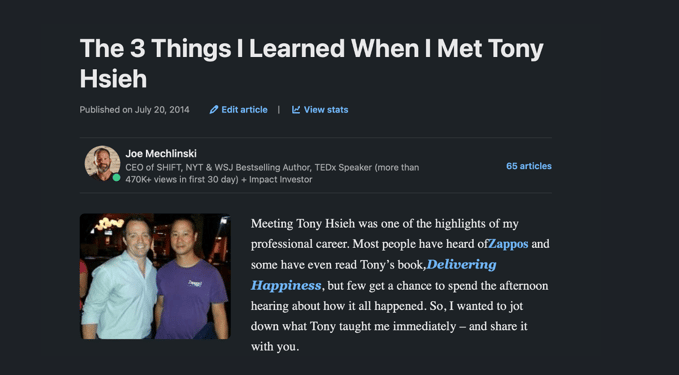
Tony's Legacy Lives On
Although Tony sadly passed away in 2018, his legacy has lived on through the Tony Hsieh Community which we host on Latch!
Each year the Tony Hsieh Award is given to those that exemplify the same mindset and values that Tony embodied. Tony was willing to take risks, be an outlaw, called crazy and prove people wrong.
Over the past few weeks, we’ve interviewed these award-winning “outlaws” on Latch - Vertical Harvest, Human Bees, and Mindbloom.
Last week’s interview was with Tyler Williams, a former Zappos Executive and right hand to Tony.
In less than 11 minutes, Tyler tells the story of how Zappos moved to a self management structure, the trials and tribulations of change, how some of the best innovations emerged as a result of the holacracy model, and why most leaders that try fail because our human nature defaults back to hierarchy.
Tyler has an uncanny way of explaining what feels complex but is actually, at its core, quite simple.
You don't want to miss this one 👇
A Holacracy Q&A On Latch
If you haven’t checked out Latch, it works like this: ask a question, send a video, and get back AI-powered data insights on the responses to the Reflect / Act questions.

After Tyler’s video, we engaged the Tony Hsieh membership community with this question and one of the CEOs made a great point:
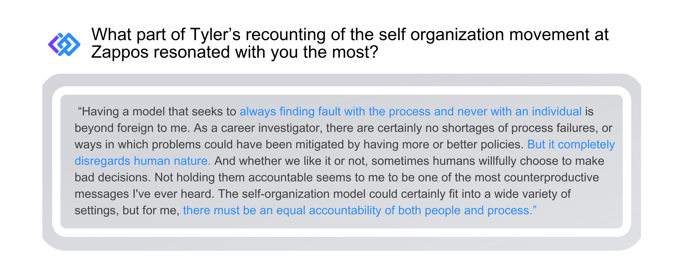
This reason is only one of the many reasons people dismiss the idea of holacracy as holacrazy.
When Zappos made the move to self-governance in 2014 it caused a media frenzy. There were many opinion pieces put out by “experts” on what it was, why it was a bad idea, and the reasons it would never work - like this article published by Forbes in January 2014.
While we’re not necessarily “for” or “against” holacracy, there are things that remain true for people to perform at their highest levels regardless of the management framework in place, like:
✅ More autonomy is better than less
✅ Less hierarchy is better than more
✅ Internal AND external factors contribute to an individual’s performance
Performance Problems are Solvable
"It doesn’t seem to matter what we do, the productivity and performance of our people continues to decline.” ←sound familiar?
One of the main reasons clients hire us is to help them solve their biggest performance-related problems. While the problems vary, they all can be solved through our proprietary process that codifies and replicates high performance for key roles across an organization. The goal is to “shift the curve” and create massive value to the overall organization.
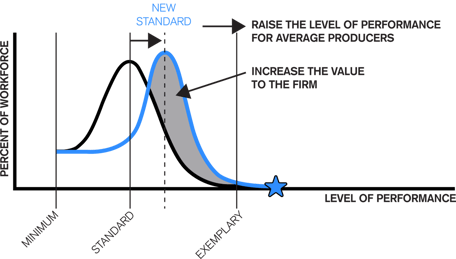
The Short Version for How We Attack Performance Issues
We start by defining “what good looks like” with the leaders and work backwards from there. Most organizations (and training curriculum) focus on equipping people to perform tasks to produce outcomes in order to achieve goals.
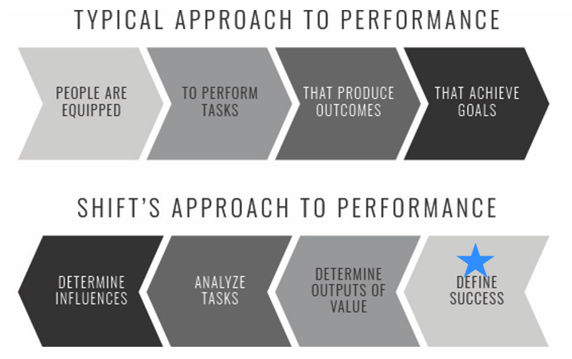
We study the top performers to understand the six factors that contribute to performance.
While holacracy focuses on the systems versus the individual, our methodology includes the internal/innate factors and external accelerators and barriers to performance. Through this process we're able to uncover the visible and invisible and share it across the population.
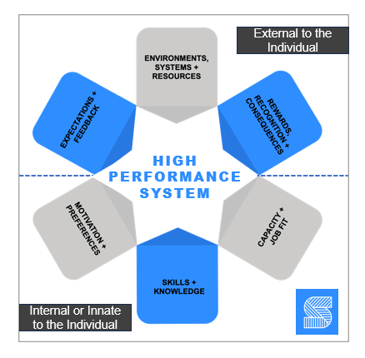
Out of the study, we produce a Role Excellence Profile which becomes the blueprint and core feature of management practices such as recruiting, onboarding, training, assessing performance, coaching and guiding, as well as developing career paths.
Proof That It Works

We've studied thousands of high performers, installed our High-Performance Model in hundreds of organizations over the past 20 years, wrote an Amazon #1 Best-Selling book called THRIVE on the topic, and have many case studies and proof points of why this process works so well.
Here’s an example of a $9B financial services company with 2000+ employees that increased their close ratio from 16% to above 25% and saw engagement levels climb to 86%.
Or like this client - a $4B lifestyle and retail apparel organization with 5,000+ employees who hired us to create a Role Excellence Profile for their Senior Leadership positions to align priorities, instill accountability, and relinquish old habits, siloed thinking, and unhealthy competition across departments
What Does Performance Have to Do with Holacracy?
Does our approach to high-performance support holacracy? Maybe.
At least half of our model does. Just as our Tony Hsieh community member called out - performance is based on external factors like systems AND internal or innate factors brought by the individual.
Here’s what we can all agree on as CEO’s - figuring out new ways to help people perform at higher levels is a priority - no matter what level of management, governance, or autonomy it takes.
If you need help unpacking and attacking performance problems - we’re only a phone call away. And if you're ready for holacracy...maybe we can recruit Tyler 😉
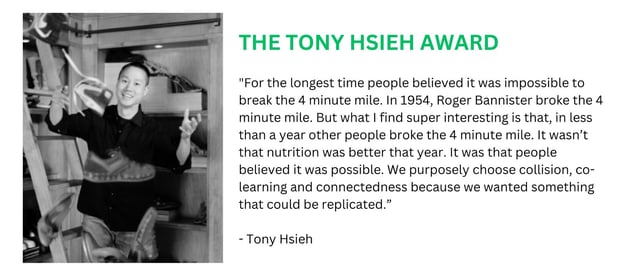
Much love to the outlaws, the crazies, and risk-takers out there - thank you for pioneering a better way forward.







